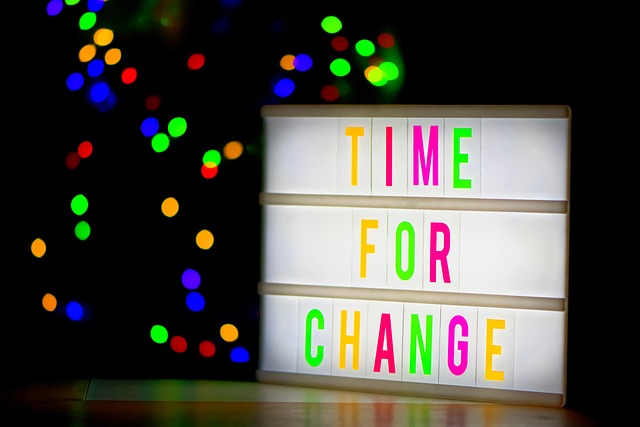
In Uncertain Times, Nonprofits Must Keep Up With Legal Compliance
04.11.2025 | Linda J. Rosenthal, JD

“When a storm subsides,” visionary commentator Rebecca Solnit reminded us three years ago in the earliest days of the pandemic tempest, “the air is washed clean of whatever particulate matter has been obscuring the view, and you can often see farther and more sharply than at any other time….”
In The Impossible Has Already Happened (April 7, 2020) The Guardian, she offered prescriptive advice for “when the storm clears …: We may be able to “see where we were and where we should go in a new light.”
“[W]e … may feel free to pursue change in ways that seemed impossible while the ice of the status quo was locked up,” Ms. Solnit explained. “We may have a profoundly different sense of ourselves, our communities, our systems of production, and our future.”
The Monitor Institute, the social-impact consulting unit of Deloitte LLP, quoted these words to open the Final Report (2021) on its comprehensive What’s Next for Philanthropy in the 2020s research initiative. The report title – Seeing Philanthropy in a New Light – incorporates a key phrase.
Rebecca Solnit’s premise that now is the time for urgent and transformative action also infuses a follow-up set of guest essays – What’s Next for Philanthropy (January – March 2023) – published by the Monitor Institute in the prestigious Stanford Social Innovation Review (SSIR).
This 2021 Final Report together with the 2023 SSIR essays are the focus of the latest installment of our long-running blog series: “Philanthropy Thought Leaders.” Of course, since it’s such a large amount of reading and thought-provoking information to wade through all at once, consider today’s post an introduction and overview – a roadmap, if you will.
The What’s Next for Philanthropy in the 2020s research initiative is by no means the first dip of the Monitor Institute into the deep and occasionally turbid waters of the history of American philanthropy. It has a long and distinguished record of research and thought leadership on this topic.
As the twentieth-century came to a close, the Monitor Institute launched a multiyear, fieldwide project in 2000 on the future of philanthropy. That work culminated in a report a few years later titled Looking Out for the Future: An Orientation for Twenty-First Century Philanthropists. The researchers explored emerging trends and “presented a vision for how philanthropy might better fulfill its potential.”
Almost ten years later, the team “was commissioned to update that report to explore the future of the field once again. The resulting essay and toolkit, What’s Next for Philanthropy: Acting Bigger and Adapting Better in a Networked World, was published in 2010. It identified 10 critical ‘next practices’—emerging approaches that were seen to be a good fit for the way the world was changing.”
In the following decade, the Monitor Institute “… painted several additional, more focused portraits of philanthropy and the social sector….”
Then, “with support from Deloitte Tax LLP and the Robert Wood Johnson Foundation, the John D. and Catherine T. MacArthur Foundation, the W.K. Kellogg Foundation, and the McConnell Foundation,” Monitor Institute researchers “… initiated an updated “What’s Next for Philanthropy” effort focused on the 2020s. The purpose: “… to once again help foundations and donors in the United States and Canada reflect on the current state of philanthropic practice and explore new possibilities, models, and interventions for the future.”
For this massive project, the research team “…engaged more than 200 philanthropy executives, professionals, donors, board members, experts, and grantees in thinking about the evolution and future of the field.”
The Monitor Institute team published the comprehensive findings in the Final Report: Seeing Philanthropy in a New Light (2021). Available free-of-charge as a 36-page PDF download, the presentation also includes several layers of links to the Institute’s website for fuller discussions of the key points.
There are “additional tools for exploring what’s next for your philanthropy” as well. For instance, the customizable What’s Next Orthodoxy Card Game “helps you and those you work with to surface unproductive assumptions in how you do your work.”
The authors organized the Final Report first around the identification of “seven ‘big shifts’” reshaping the role and context for philanthropy. Next, they highlight and explain “four emerging ‘edges’ of practice that have outsized potential to change the field in the next decade.”
Seven Big Shifts
The listed Big Shifts are largely consistent with the findings of most other contemporary observers of the chaotic times in which we live: (1) Economic inequality; (2) Extreme political polarization; (3) Shifting demographics; (4) New momentum around racial justice; (5) Ubiquitous technology and access to information; (6) A state of climate and social emergency; and (7) A social compact in flux.
“While none of these forces are new and each of them is significantly changing the social sector on its own,” the Report authors explained, “they are also combining, accelerating, and reinforcing one another in complex ways that are fundamentally transforming our lives and our communities. Altogether, they are creating a whole new context for the work of philanthropy.”
Four Emerging Edges
The meatier parts of the Final Report focus on what the Monitor Institute team call “emerging edges.”
So what exactly are “emerging edges”? They are “ideas and approaches that start at the periphery of an organization or a field. They may have modest beginnings, but because they are aligned to major shifts in society, they have the potential to grow, influence, and ultimately reshape the core over time.”
The research and analysis for this What’s Next for Philanthropy in the 2020s initiative “…has surfaced four of these key ‘Edges’ of development in philanthropy” that may permit a funder to “…ride the momentum of the Big Shifts and scale in a way that will allow them to influence—or even overtake—the core practices of philanthropy over time.”
The four Edges are: “(1) Rethinking philanthropy’s role, (2) Balancing power; (3) Catalyzing leverage; and (4) (Re)designing the enterprise.”
Funders are encouraged to “find” and “embrace” their own “edges” with the help of the four linked “Edge Overviews” which are more detailed discussions found on the Monitor Institute website section for the What’s Next for Philanthropy in the 2020s initiative. With many examples of how funders are “already experimenting with new practices,” the Edge Overview links provide a “rough game plan for how to get started on exploring and nurturing new Edges in your work, along with a simple toolkit of guides, inspirations, and even a game to help you engage.”
The Monitor Institute’s long-term interest in, and commitment to scholarly research of, the field of philanthropy continued, of course, even after the most recent comprehensive report was issued in 2021. The turbulence of the times and the unprecedented changes and upheavals of the pandemic years make ongoing study, analysis, and sector-wide conversations more than ever an imperative.
To “add additional color” to the 2021 Final Report of the What’s Next for Philanthropy in the 2020s, the lead researchers in early 2023 asked for additional insights from five of the prominent leaders who participated in that study. They posed to each “a simple question: What’s next for philanthropy?”
The responses “… are hopeful, honest, and insightful about the big shifts and emerging practices that are reshaping the field,” say 2021 report authors Gabriel Kasper, Justin Marcoux & Jennifer Holk.
This follow-up collection of articles published in the Stanford Social Innovation Review includes an introductory and a closing essay from the Monitor Institute authors along with the individual essays penned by the five participating experts:
The hope of the Monitor Institute team is that these additional discussions, combined with the “broader findings from the What’s Next for Philanthropy in the 2020s initiative, can help to “… spark ideas and start a dialogue about how philanthropy can continue to change and improve in the coming years.”
It’s possible and even likely that, from time to time in the coming weeks, we may revisit this intriguing treasure trove and examine parts of it much more closely.
– Linda J. Rosenthal, J.D., FPLG Information & Research Director
